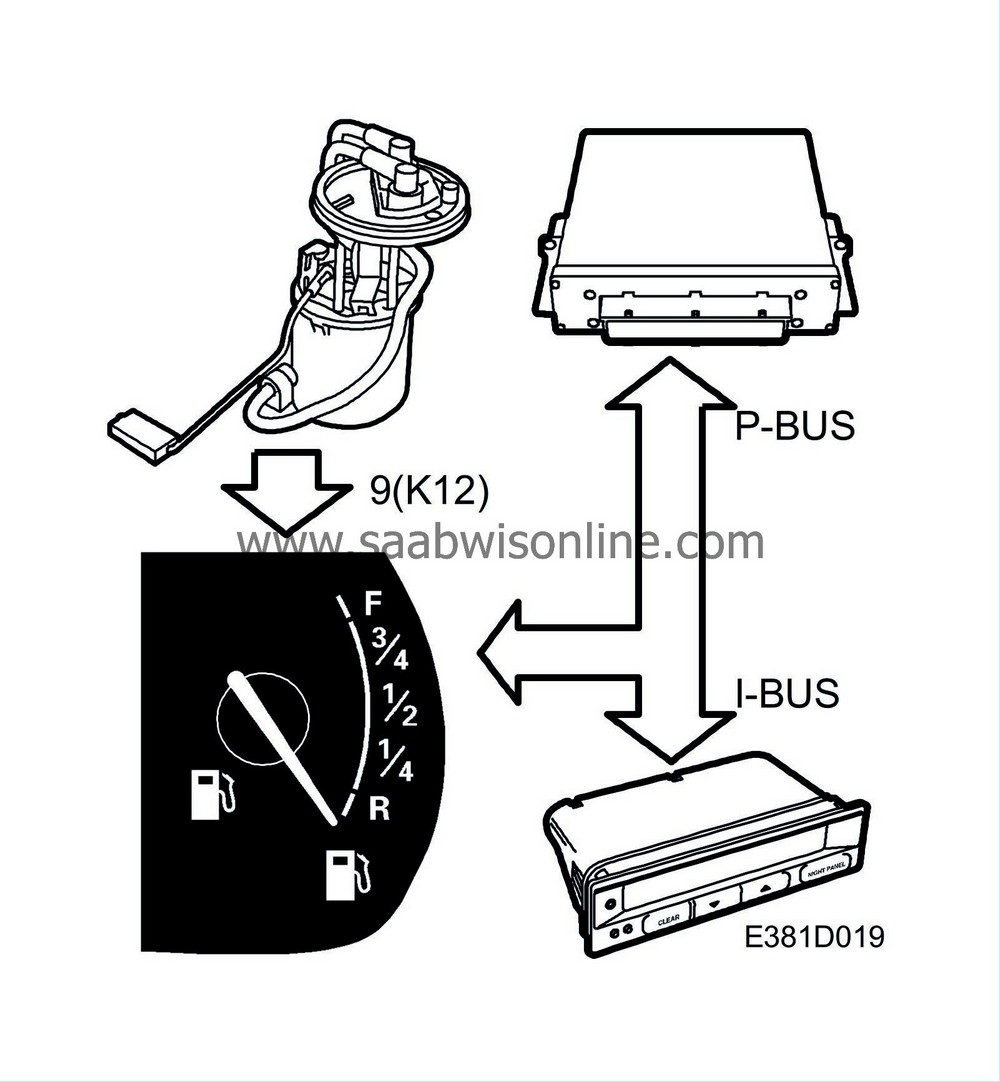Fuel gauge
| Fuel gauge |
The fuel gauge gives the driver information on how much fuel is left in the tank. It consists of a fuel gauge in the main instrument unit and a level sensor in the tank.


The level sensor has a variable resistance, the value of which corresponds to the level of the sensor's float in the tank. The resistance increases at higher fuel levels. With an empty tank the resistance in the sensor is 50±1.5 ohms and with a full tank 425±6.5 ohms.
The sensor is connected to pin 9 (K12) of the main instrument unit control module where it is supplied with B+ and grounded through pin 8 (K12).
The control module detects the sensor's resistance and controls the current to the fuel gauge so that the position of the meter needle corresponds to the resistance of the sensor.
To enable a more accurate display with small amounts of fuel in the tank, the main instrument display control module converts to measuring fuel consumption once the amount of fuel drops below 10 litres.
The main instrument unit control module sends information on the fuel level to the buses.
| Fuel reserve indicator lamp |
With about 10 litres of fuel remaining in the tank, the lamp lights up to indicate low fuel level. The lamp is supplied with current from the main instrument unit and grounded by the main instrument unit's control module when it is to be lit.
The main instrument unit lights this lamp for three seconds when the ignition is switched on.
| Fuel consumption |
Trionic sends out fuel consumption information on the bus.
The main instrument unit control module uses the information to control the fuel gauge (under 10 litres).


